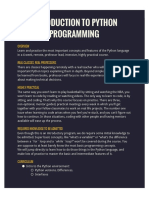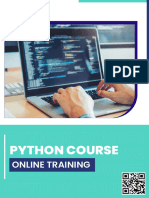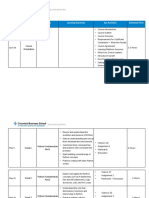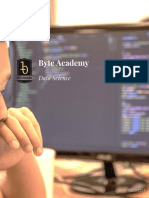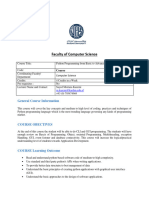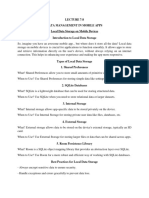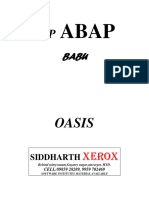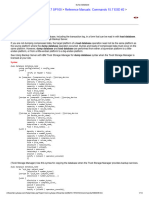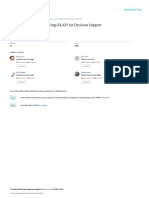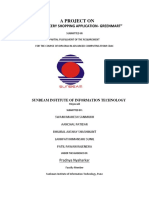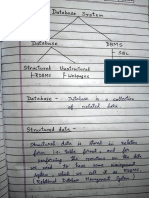0% found this document useful (0 votes)
158 views13 pagesCoding Dojo PH Course Packet
This document provides an overview and curriculum for a 12-week online course on data science and machine learning in Python. The key points are:
- The course teaches data science fundamentals and machine learning algorithms over 12 weeks using Python programming language. Students will learn concepts through hands-on projects using real datasets.
- The curriculum covers the entire data science process from data preparation and analysis to machine learning modeling and visualization. Core topics include Python, statistics, machine learning algorithms like decision trees, clustering, and neural networks.
- Upon completing the course, students will have a portfolio of projects to showcase their skills and be prepared for jobs in the growing field of data science. Over 5,000 alumni have been hired
Uploaded by
Francis FallorinCopyright
© © All Rights Reserved
We take content rights seriously. If you suspect this is your content, claim it here.
Available Formats
Download as PDF, TXT or read online on Scribd
0% found this document useful (0 votes)
158 views13 pagesCoding Dojo PH Course Packet
This document provides an overview and curriculum for a 12-week online course on data science and machine learning in Python. The key points are:
- The course teaches data science fundamentals and machine learning algorithms over 12 weeks using Python programming language. Students will learn concepts through hands-on projects using real datasets.
- The curriculum covers the entire data science process from data preparation and analysis to machine learning modeling and visualization. Core topics include Python, statistics, machine learning algorithms like decision trees, clustering, and neural networks.
- Upon completing the course, students will have a portfolio of projects to showcase their skills and be prepared for jobs in the growing field of data science. Over 5,000 alumni have been hired
Uploaded by
Francis FallorinCopyright
© © All Rights Reserved
We take content rights seriously. If you suspect this is your content, claim it here.
Available Formats
Download as PDF, TXT or read online on Scribd
/ 13






